[= Callimellum abdominale (Olivier, 1800)]
Subfamilia: CERAMBYCINAE / Tribus: HYBODERINI
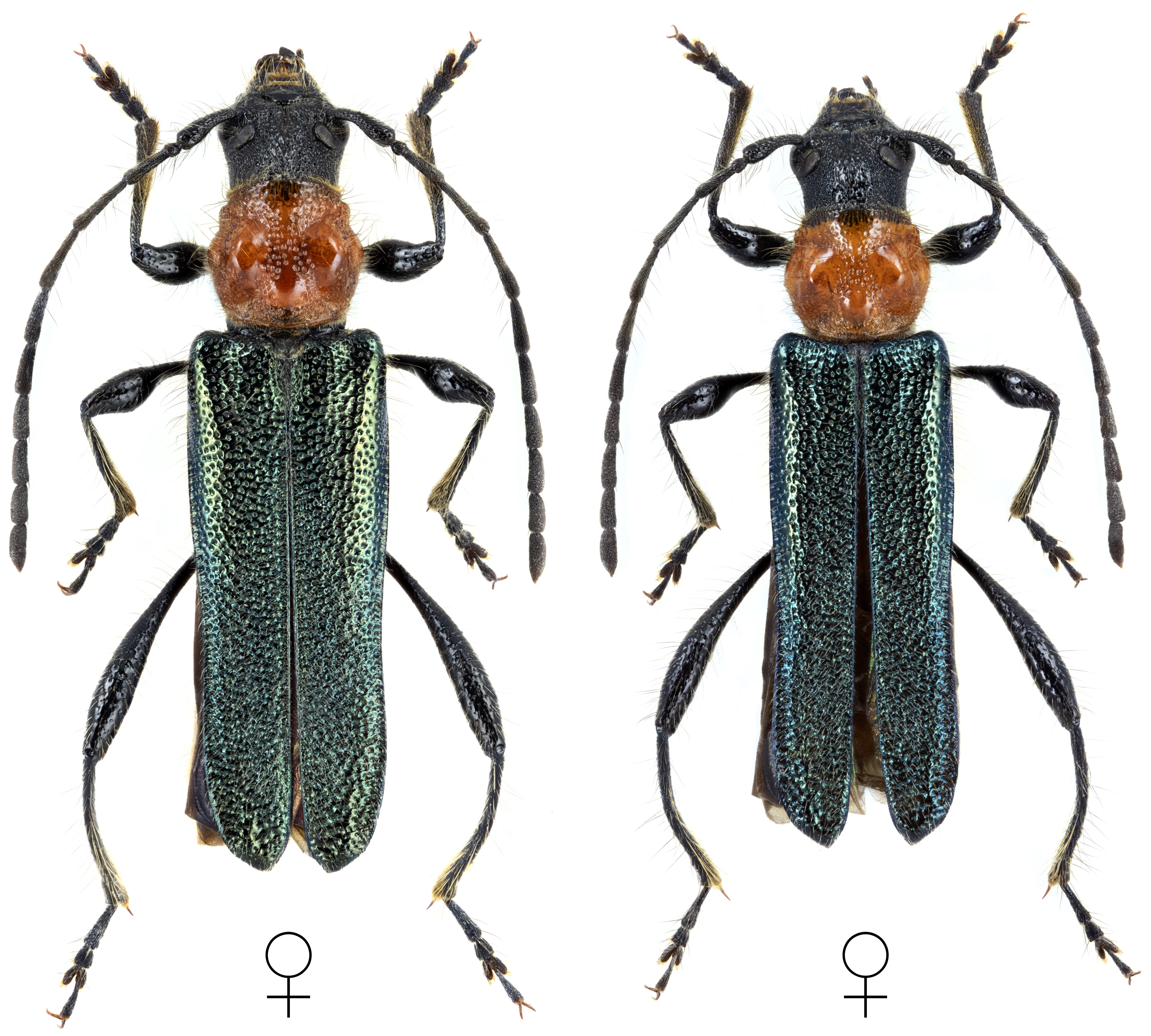
[Photo © David Navrátil, click on the picture for 4K resolution]
Callimus abdominalis, a relatively common Mediterranean flower visitor, has been described from Southern France as Callidium abdominale by Guillaume-Antoine Olivier in 1800 [❖]. Larva of C. abdominalis develop in dead branches of broad spectrum of deciduous trees and shrubs (e.g. Quercus, Acer, Cydonia, Paliurus, Ostrya, Cercis, Pistacia, Cornus). Life cycle 2 years, adults hatch and remain in pupal cells in autumn before the second overwintering. Adults, active from May to July, are diurnal and anthophilous. The taxon is very variable in color, the elytra are green, bronze or even blue, the pronotum is red or black, and the abdomen is always red.
Body length: 5 - 9 mm Life cycle: 2 years Adults in: May - July Host plant: polyphagous in deciduous trees (Quercus, Acer, Cydonia, Paliurus, Ostrya, Cercis, Pistacia, Cornus etc.) Distribution: Albania, Bosnia and Herzegovina, Corsica, Croatia, France, Italy, Sardinia, Sicily, Spain
The mounted females were collected on flowers (Apiaceae) in in Bosco della Ficcuzza reserve (Palermo province, Sicily, Italy). The depicted living beetles were: (DR) - reared from larva found in Argelès-sur-Mer environs (Canton of La Côte Vermeille, Pyrénées-Orientales, Occitanie, France) in March 2020, (TN)- netted it from the canopy of a flowering Sorbus tree on the Mountain Dajti (Albania) on June 6, 2014.Collected by Martin Švarc, Daniel Rydzi and Tamás Németh
[❖]
Olivier G.-A.:
Entomologie ou Histoire Naturelle des Insectes, avec leurs caractères génériques et spécifiques, leur description, leur synonymie et leur figure enluminée.
Coléoptères. Imprimerie de Lanneau, Paris 4: 125-492 (1800). [download]
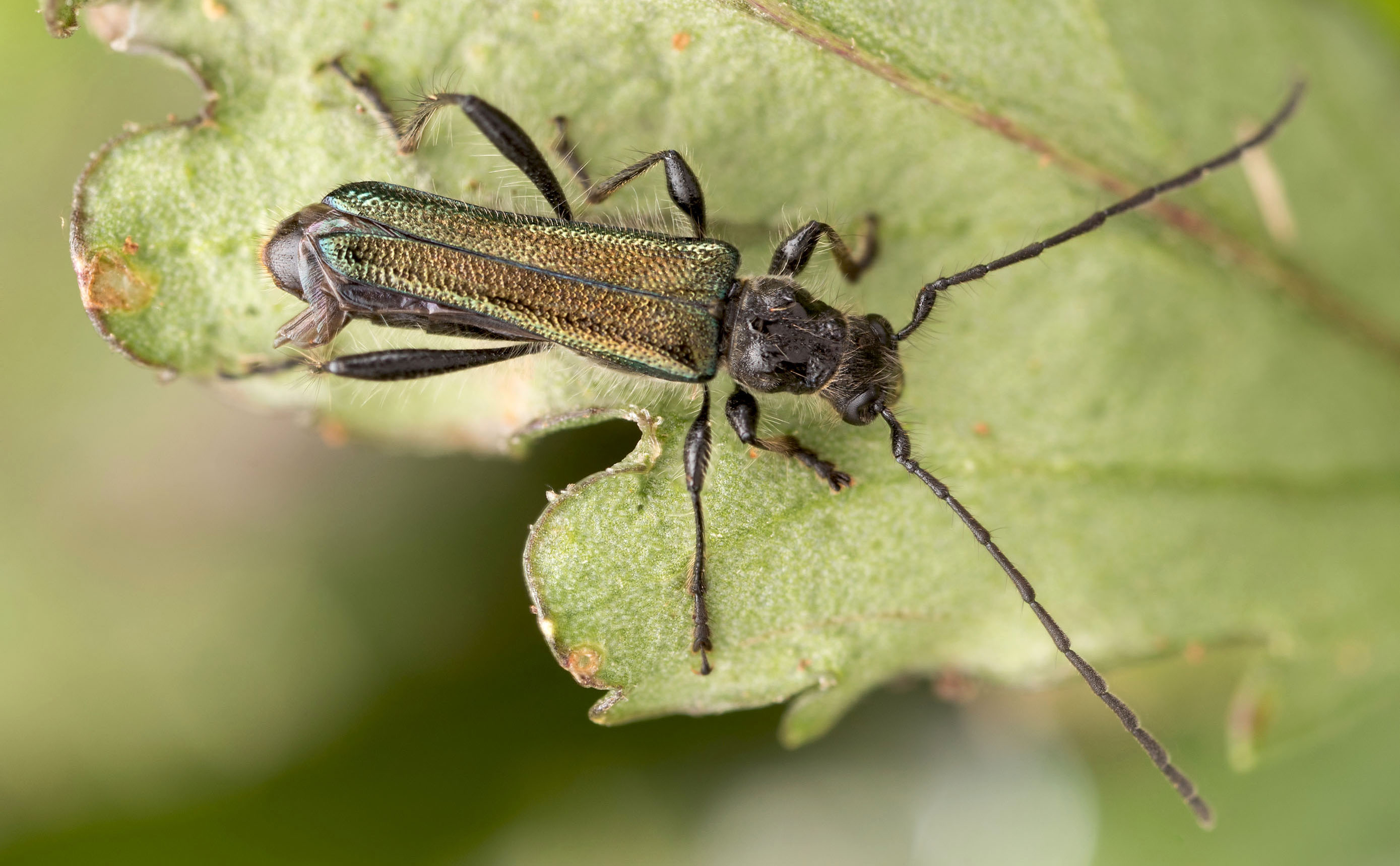
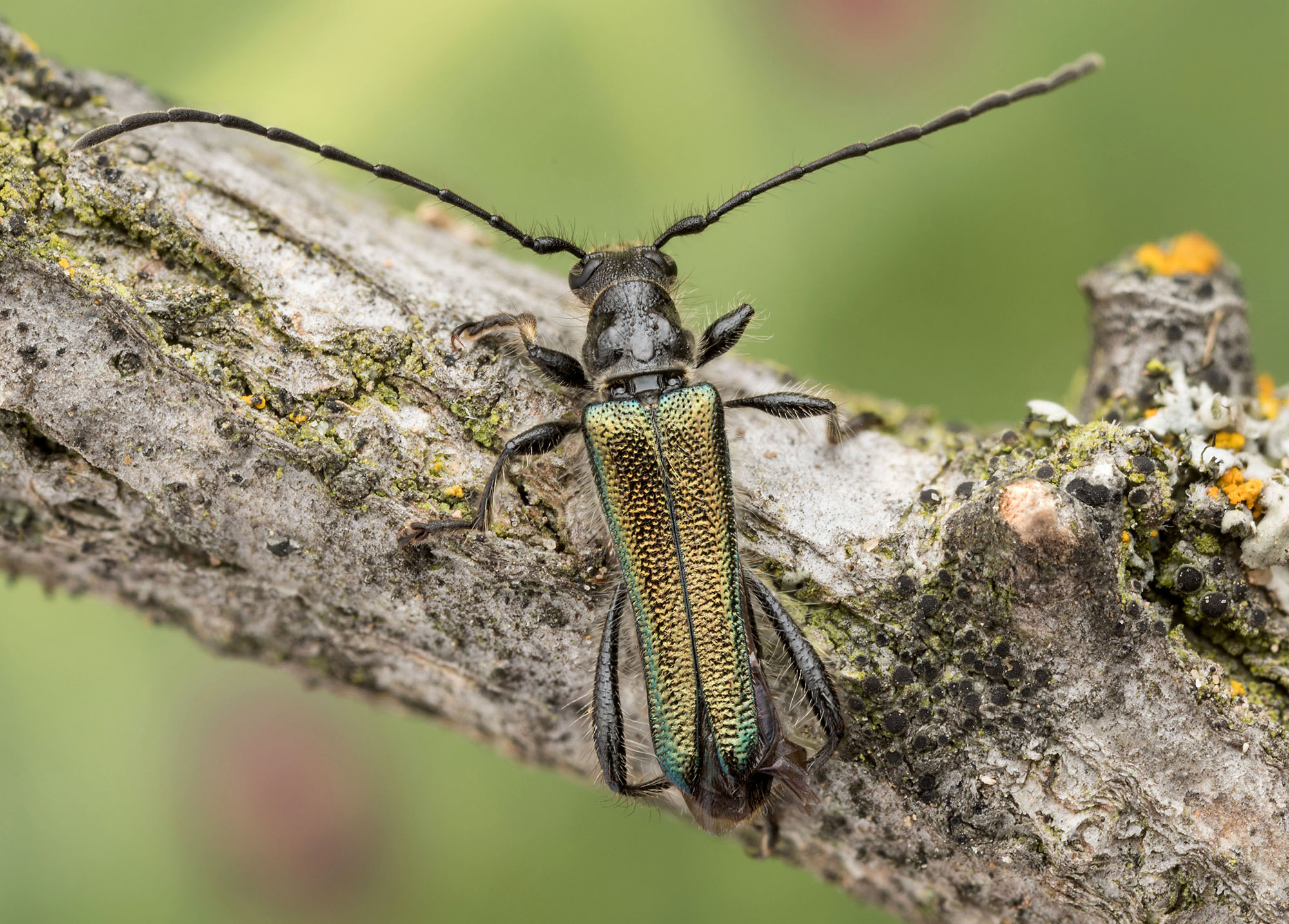
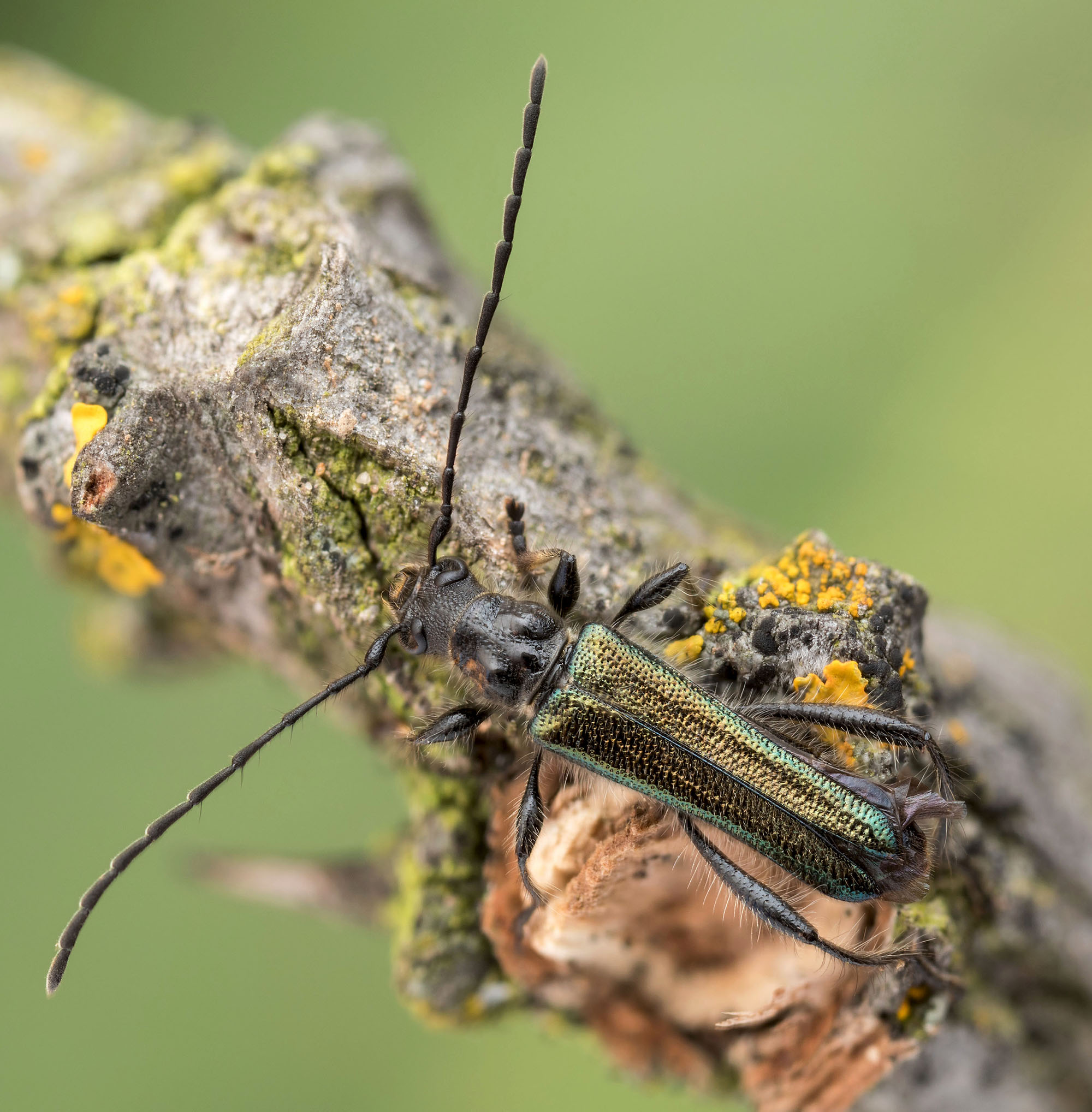
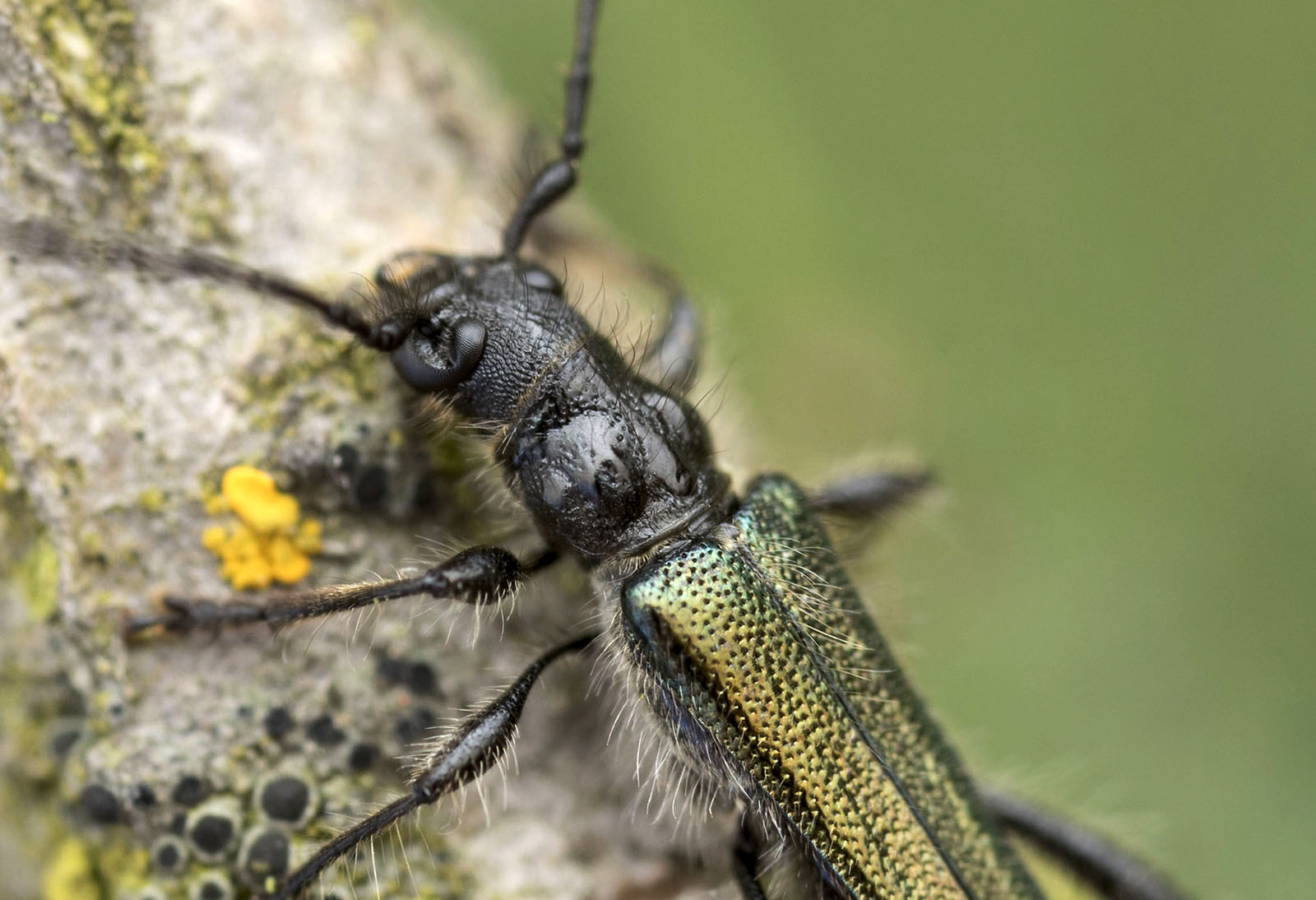
[Photo © Daniel Rydzi]
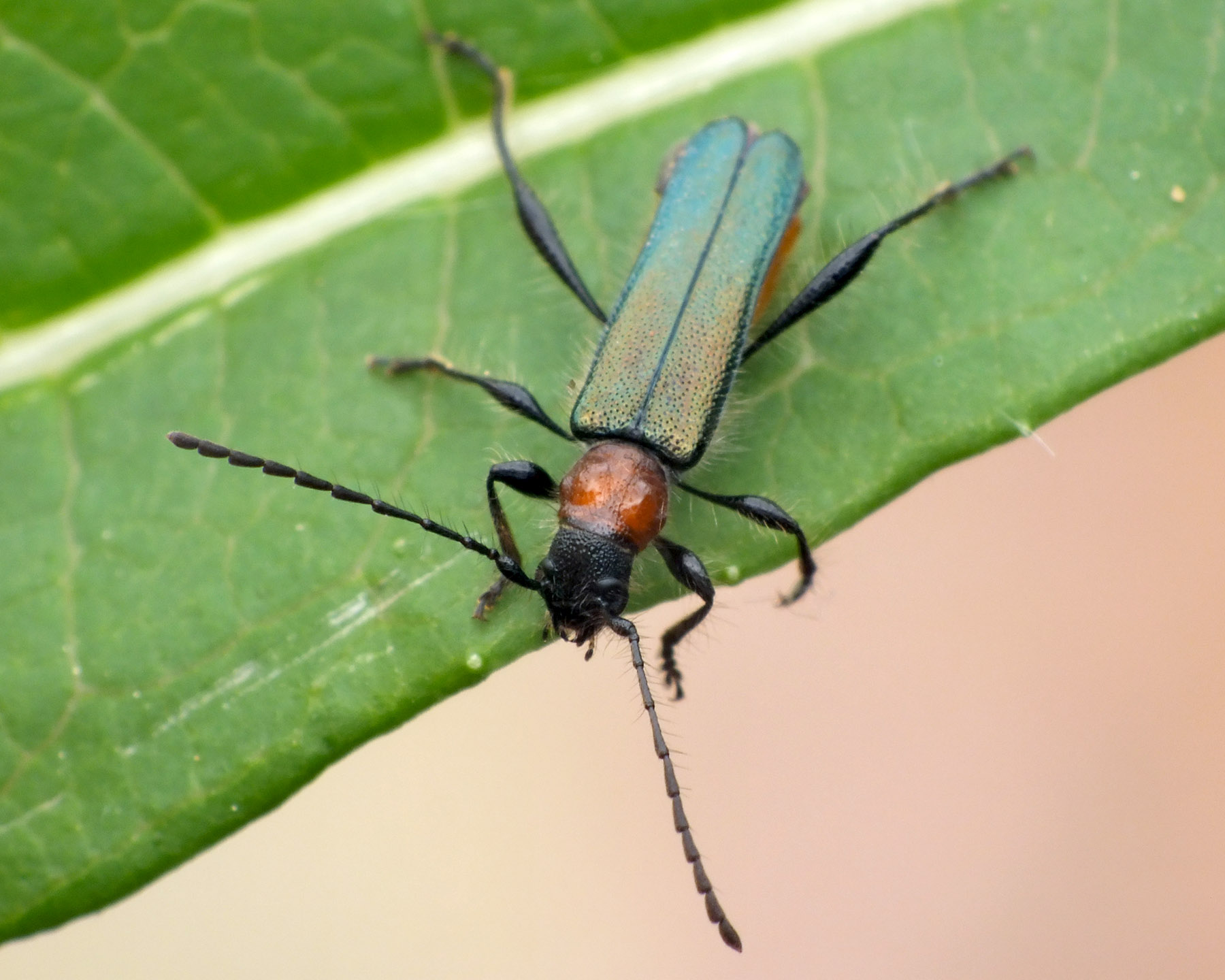
[Photo © Tamás Németh]
| Subfamilia | Cerambycinae Latreille, 1802 |
| Tribus | Hyboderini Linsley, 1940 |
| Genus | Callimus Mulsant, 1846 |
| Subgenus | Callimus Mulsant, 1846 |
| Species | Callimus (Callimus) abdominalis (Olivier, 1795) |
